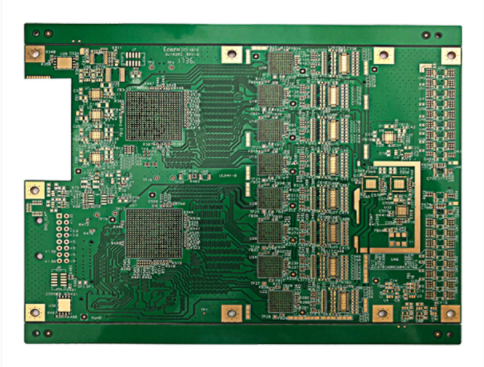PCB circuit board copper should pay attention to those problems
Copper-clad is an important part of PCB circuit board design. The so-called copper-clad is to use the unused space on the PCB as a reference surface and fill it with solid copper. These copper areas are also called copper filling.
The significance of copper coating is to reduce the impedance of the ground wire and improve the anti-interference ability; reduce the voltage drop and improve the efficiency of the power supply; connecting with the ground wire can also reduce the loop area. Also for the purpose of making the PCB as not deformed as possible during soldering, most PCB manufacturers will also require PCB circuit board designers to fill the open area of the PCB circuit board with copper or grid-like ground wires.
Everyone knows that under high frequency conditions, the distributed capacitance of the wiring on the printed circuit board will work. When the length is greater than 1/20 of the corresponding wavelength of the noise frequency, an antenna effect will occur, and the noise will be emitted through the wiring. . If there is a poorly grounded copper pour in the PCB, the copper pour becomes a noise propagation tool.
Therefore, in a high-frequency circuit, do not think that the ground wire is connected to the ground. This is the "ground wire". Be sure to punch holes in the wiring with a pitch less than λ/20 to "good ground" with the ground plane of the multilayer board. If the copper coating is handled properly, the copper coating not only increases the current, but also plays a dual role of shielding interference.
There are generally two basic methods of copper pour, which are large-area copper pour and grid copper. It is often asked whether large-area copper pour is better or grid copper pour is better. It's not easy to generalize!
Large-area copper coating has the dual functions of increasing current and shielding. However, if large-area copper coating is used for wave soldering, the board may lift up and even blisters. Therefore, for large-area copper coating, several grooves are usually opened to relieve the blistering of the copper foil.
The pure copper-clad grid is mainly used for shielding, and the effect of increasing the current is reduced. From the perspective of heat dissipation, the grid is good (it reduces the heating surface of the copper) and plays a role of electromagnetic shielding to a certain extent.

But it needs to be pointed out that the grid is made up of traces in staggered directions. We know that for the circuit, the width of the trace has a corresponding "electrical length" for the operating frequency of the circuit board(the actual size is divided by The digital frequency corresponding to the operating frequency is available, see related books for details). When the operating frequency is not very high, perhaps the role of the grid lines is not very obvious. Once the electrical length matches the operating frequency, it is very bad, and you will It is found that the circuit is not working properly at all, and signals that interfere with the operation of the system are being transmitted everywhere. So for colleagues who use grid copper plating, my suggestion is to choose according to the working conditions of the designed circuit board.
Therefore, high-frequency circuits have high requirements for anti-interference and multi-purpose grid copper, and low-frequency circuits with large currents usually use complete copper.
Then we are in the copper pour, in order to make the copper pour achieve our expected effect, then what issues should be paid attention to in the copper pour:
1. If the PCB circuit board has many grounds, such as SGND, AGND, GND, etc., according to the position of the PCB board, the main "ground" is used as a reference to independently pour copper, and the digital ground and analog ground are separated Come to pour copper. At the same time, before pour copper, thicken the corresponding power connection: 5.0V, 3.3V, etc. In this way, multiple deformable structures with different shapes are formed.
2. For single-point connection of different grounds, the method is to connect through 0 ohm resistors or magnetic beads or inductance.
3. Do not pour copper in the open area of the middle layer of the PCB multi-layer circuit board. Because it is more difficult for you to make this copper clad "good ground".
4. The island (dead zone) problem, if you think it's big, it won't cost much to define a ground via and add it in.
5. The metal inside the equipment, such as metal radiators, metal reinforcement strips, etc., must be "good grounding".
6. The heat dissipation metal block of the three-terminal regulator must be well grounded. The ground isolation strip near the crystal oscillator must be well grounded.
7. Copper coating near the crystal oscillator. The crystal oscillator in the circuit is a high-frequency emission source. The method is to pour copper around the crystal oscillator, and then ground the shell of the crystal oscillator separately.
8. Try not to have sharp corners on the circuit board, because from the perspective of electromagnetics, this constitutes a transmitting antenna, and it is recommended to use the arc edge line.
9. At the beginning of wiring, the ground wire should be treated the same. When routing the ground wire, the ground wire should be routed well. You cannot rely on adding via holes to eliminate the ground pins for the connection after the copper pour. This effect is not good.
In short: if the grounding problem of the copper on the PCB circuit board is dealt with, it must be "pros outweigh the disadvantages", it can reduce the return area of the signal line and reduce the electromagnetic interference of the signal to the outside.